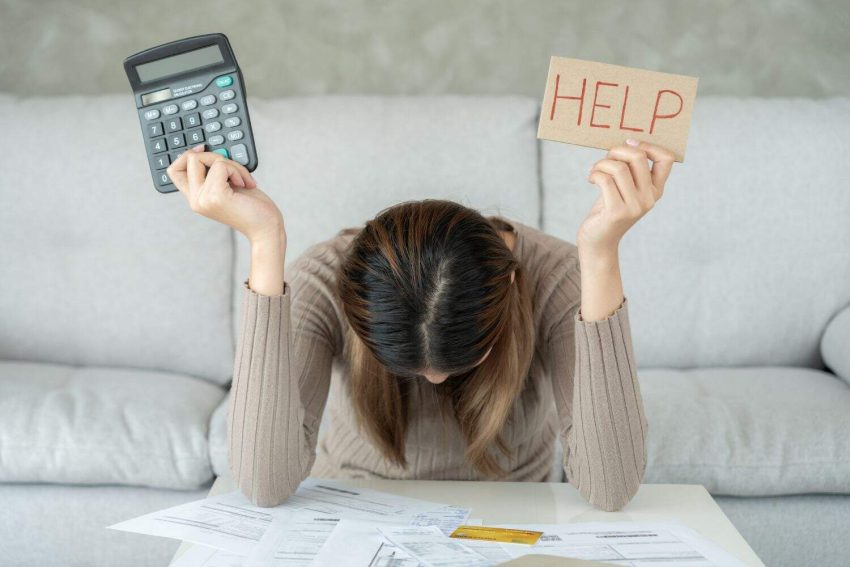Causing a woman to be blacklisted is almost the same as locking her up; she cannot borrow money and therefore, she cannot leave.
In a country struggling with getting its economy to grow and create more jobs, and consumers battling to get their debt under control, creditors of all kinds have their work cut out for them to collect outstanding payments. One of the methods is threatening you with “blacklisting”.
But what is blacklisting and what are the implications specifically for women? Werksmans Attorneys’ director Naledi Motsiri and candidate attorney S’nenhlanhla Lushaba say a blacklist is a list of people barred from accessing certain services or opportunities due to negative conduct that created a perception of untrustworthiness.
“Women face daily challenges in asserting their rights and accessing opportunities. While gender-based violence (GBV) is often understood in terms of physical or emotional abuse, economic abuse is another pervasive form of GBV that undermines women’s independence and dignity.”
ALSO READ: Everything you need to know about credit bureaus
Partners deliberately burden women with debt for blacklisting
They say one of the most devastating examples of economic abuse is when a partner deliberately overburdens a woman with debt (whether by taking out loans in her name, coercing her into signing credit agreements, or leaving her solely responsible for household debts), ultimately leading to her being blacklisted.
“For many women, particularly single mothers, survivors of abuse and breadwinners, blacklisting is not just a financial mark against their name. It can trap them in cycles of poverty and dependency, making it harder to escape abusive relationships, support their families, or access the resources needed to build independence.”
They point out that blacklisting warns credit providers and others that the person may not be financially reliable and may struggle to settle their debts timeously.
ALSO READ: Credit and the law: Here are the rights you must know about
Why is blacklisting such a major issue for women?
Motsiri says the consequences of blacklisting are especially harsh for women for these reasons:
- Access to credit: Blacklisted people cannot easily obtain loans, credit cards, or housing finance, limiting their ability to invest in businesses, buy homes, or cover emergency expenses. This can prevent women in abusive or oppressive environments from being able to establish themselves independently.
- Employment opportunities: Certain jobs that require financial responsibility are closed to people with negative credit reports, further limiting employment options for blacklisted women.
- Housing security: Landlords may refuse to lease to blacklisted applicants, often forcing women to remain in dangerous living arrangements.
- Economic independence: For women leaving abusive relationships, being blacklisted often means having no access to the financial tools necessary to build a new life.
Lushaba says in this way, blacklisting perpetuates structural inequality that can trap many women in cycles of dependence and financial instability.
ALSO READ: Having a good credit score is crucial during tough financial times
How does blacklisting work?
How does blacklisting happen? The National Credit Act regulates the process of blacklisting. Once consumers default on their payments, the credit provider may report this default to a credit bureau, but only after giving you 20 business days’ notice. The bureau then records the default as a blacklist notation on your credit report.
If you receive notice that you are about to be blacklisted, you have the right to dispute the accuracy of the information. The credit bureau can demand proof from the credit provider and, if unsatisfied, escalate the dispute to the National Credit Regulator (NCR). Importantly, during this dispute, the bureau cannot proceed with the blacklisting until the matter is resolved.
Can you have a wrongful blacklisting removed? Motisiri says it can be done, but if you did not receive notice or only discover the blacklisting after it has been reported, the process of removal is unfortunately more complex.
“Once disputed with the NCR, the case may proceed to the Consumer Tribunal. If successful, you have the right to be compensated for the costs of clearing the wrongful blacklisting.
“However, when the blacklisting is correct, the only way forward is to settle the debt through a repayment plan with the creditor or with the assistance of a debt counsellor. Once the debt is settled, the credit provider must notify the bureau to remove the notation.”
ALSO READ: Loan sharks and the curse of poverty
Why is blacklisting such a problem for women?
Motsiri says economic justice is a core principle of gender justice. “Just as women have the right to live free from physical violence, they also have the right to financial independence and dignity.
“By educating women about their rights under the National Credit Act and providing free or affordable access to legal and debt counselling services, we can empower women to regain their financial standing and break free from economic abuse.”
Lushaba says if you are a woman struggling with debt, blacklisting, or economic abuse, seek advice from an attorney, a debt counsellor, or your nearest law clinic. “Taking that step is not just about clearing your name, it is about reclaiming your independence and dignity.”
Credit bureaux do not like consumers to refer to a blacklist, because there is not actual blacklist. The backlist means that you have adverse information recorded against your name at the credit bureaux. When you apply for credit, the creditor will check with the credit bureau to see what your credit record looks like before taking the risk of lending you money.
